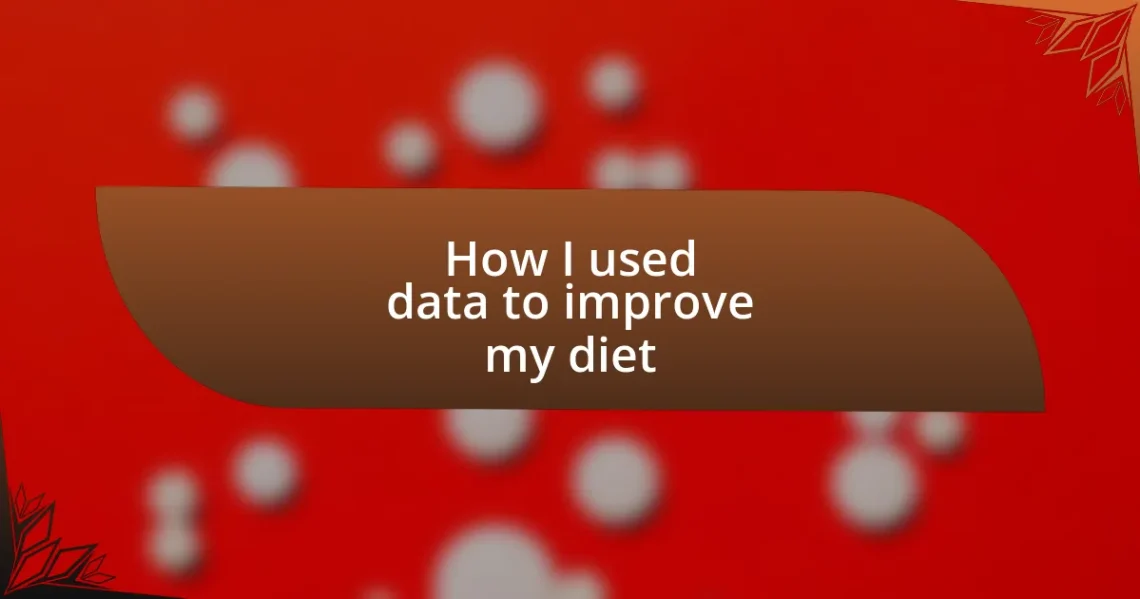
How I used data to improve my diet
Key takeaways:
- Tracking food intake revealed patterns influencing energy levels and mood, leading to more informed eating choices.
- Setting SMART goals helped establish clear dietary objectives, boosting confidence and motivation through small achievements.
- Regularly monitoring progress allowed for adaptable changes and deeper insights into cravings and habits.
- Maintaining long-term dietary habits involves creating a supportive environment and celebrating small victories while practicing self-compassion during setbacks.
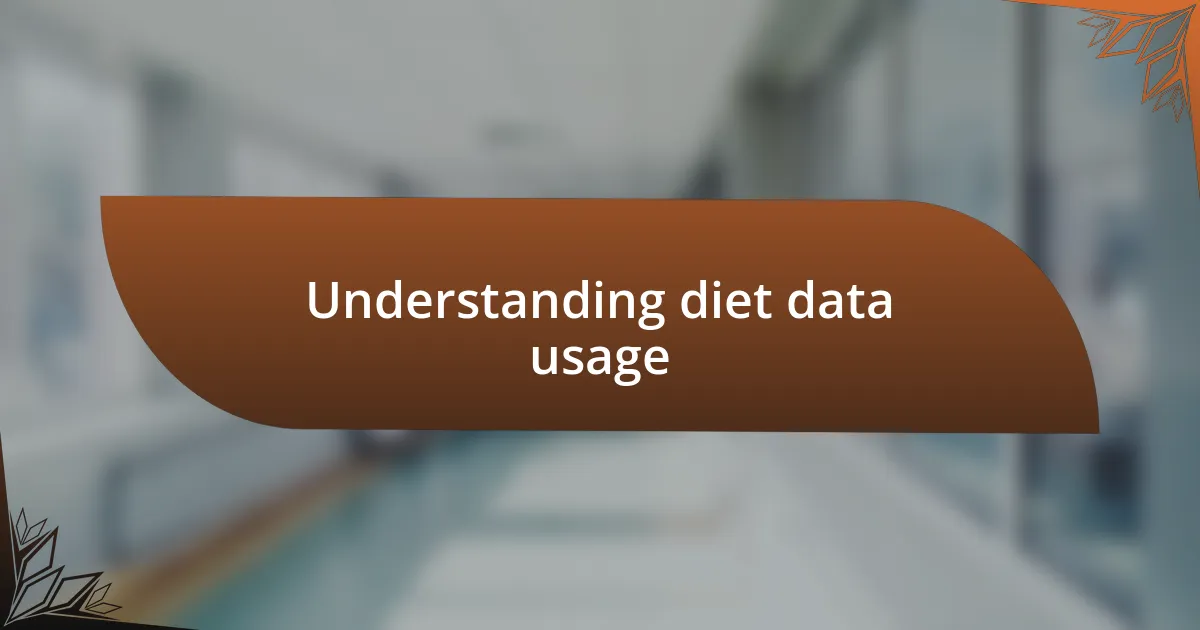
Understanding diet data usage
Using data to improve my diet is all about making informed decisions. I remember when I first started tracking my meals; it was eye-opening to see how certain foods affected my energy levels and mood. Have you ever considered how a simple food diary could transform your relationship with what you eat?
By analyzing my food intake, I discovered patterns I hadn’t noticed before, such as how late-night snacking impacted my sleep quality. There was a period when I felt sluggish all morning without knowing why, and it turned out my evening choices were to blame. Isn’t it fascinating how connecting the dots like this can lead to significant changes?
I also learned the importance of balanced macros—proteins, fats, and carbohydrates. At one point, I focused too much on cutting carbs, thinking it was the solution. But then I realized that understanding my unique needs, such as activity levels and personal goals, was critical. This newfound awareness allowed me to create a diet that nourished my body holistically.
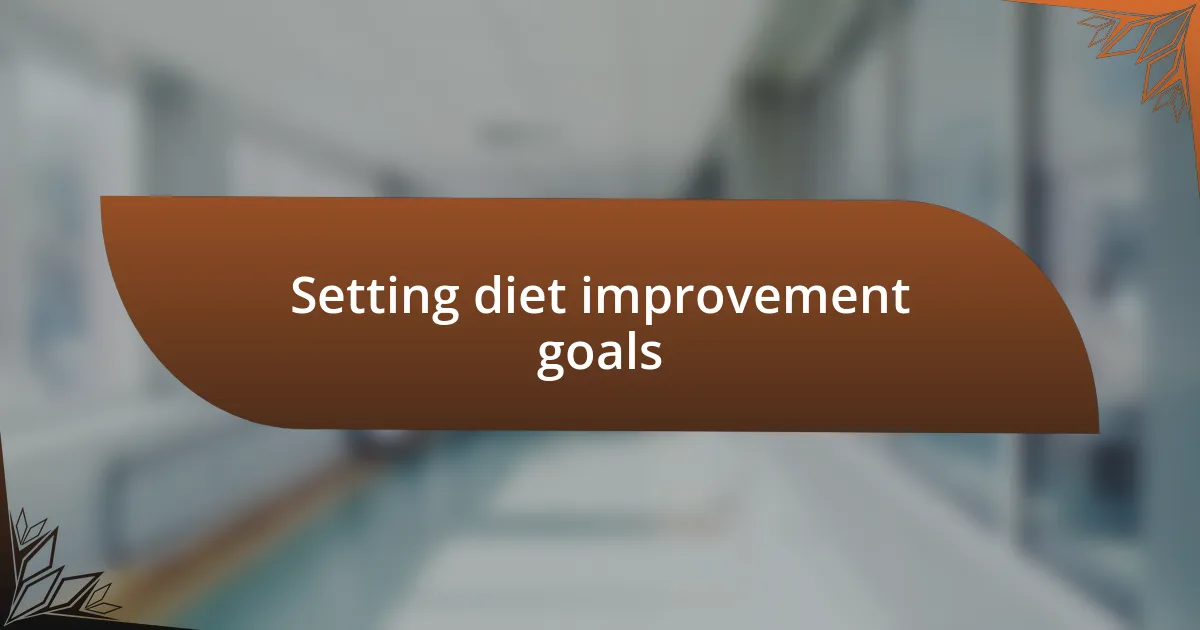
Setting diet improvement goals
Setting diet improvement goals is a crucial step in my journey. I recall sitting down with a notebook after a particularly unproductive week of eating poorly. I wanted to establish clear goals, not just vague aspirations. Focusing on SMART goals—Specific, Measurable, Achievable, Relevant, and Time-bound—helped me outline what I truly wanted to achieve.
Here are some examples of goals I set for myself:
- Reduce sugar intake to below 25 grams per day within one month.
- Incorporate at least two servings of vegetables in my lunch every day.
- Drink eight glasses of water daily for the next three weeks.
- Go meatless every Monday for the next month and explore plant-based recipes.
With my goals in place, I noticed a shift in my mindset. Each achievement, however small, became a boost to my confidence. Instead of overwhelming myself with sweeping changes, I celebrated progress, such as trying a new vegetable or sticking to my water goals. This approach anchored my motivation and made the entire experience enjoyable.

Analyzing food intake data
Analyzing my food intake data was an eye-opening experience. I began by diligently tracking everything I consumed, from meals and snacks to beverages. This habit revealed patterns I didn’t initially recognize, such as my tendency to reach for sugary snacks during mid-afternoon slumps. It was fascinating how a simple observation could guide my choices, steering me towards healthier alternatives.
After a few weeks, I decided to categorize my intake into macro and micronutrients. I never realized how little protein I was consuming compared to carbs. This analysis pushed me to explore new meal options, such as incorporating more legumes and lean meats into my daily routines. I felt empowered by this newfound awareness; it was like uncovering a treasure map that led me toward a healthier lifestyle.
The process of analyzing my food data wasn’t just about numbers; it was deeply personal. Each meal’s nutritional breakdown became a reflection of my journey. I also noticed how certain foods affected my energy levels and mood throughout the day, which motivated me to make more informed choices. With every tiny adjustment based on data, I felt more in control of my health and wellbeing.
| Food Type | Calories |
|---|---|
| Breakfast Smoothie | 300 |
| Lunch Salad | 400 |
| Snack (Chips) | 150 |
| Dinner Stir-fry | 500 |

Adjusting diet based on insights
Adjusting my diet based on insights wasn’t just about tweaking a few meals; it was transformative. I vividly remember the moment I swapped my afternoon chips for a handful of almonds instead. That simple change, which came from analyzing the data, not only satisfied my cravings but also kept my energy levels stable. Have you ever experienced that rush of clarity when you finally make a small adjustment that leads to a big impact?
As I dug deeper into my eating habits, I recognized that my hydration levels were often neglected. My data revealed that I consistently fell short on water intake, which explained my afternoon fatigue. I decided to set reminders on my phone to drink water, and the difference was palpable. I was surprised by how easily I could elevate my mood and focus with a little hydration.
With each adjustment, I felt a sense of ownership over my health. Tracking my food intake gave me the power to say goodbye to mindless eating. Instead, I began to nourish my body with intention. Have you ever considered how small insights could pave the way to profound changes? For me, embracing this new approach has led not just to better eating but to a healthier mindset overall.
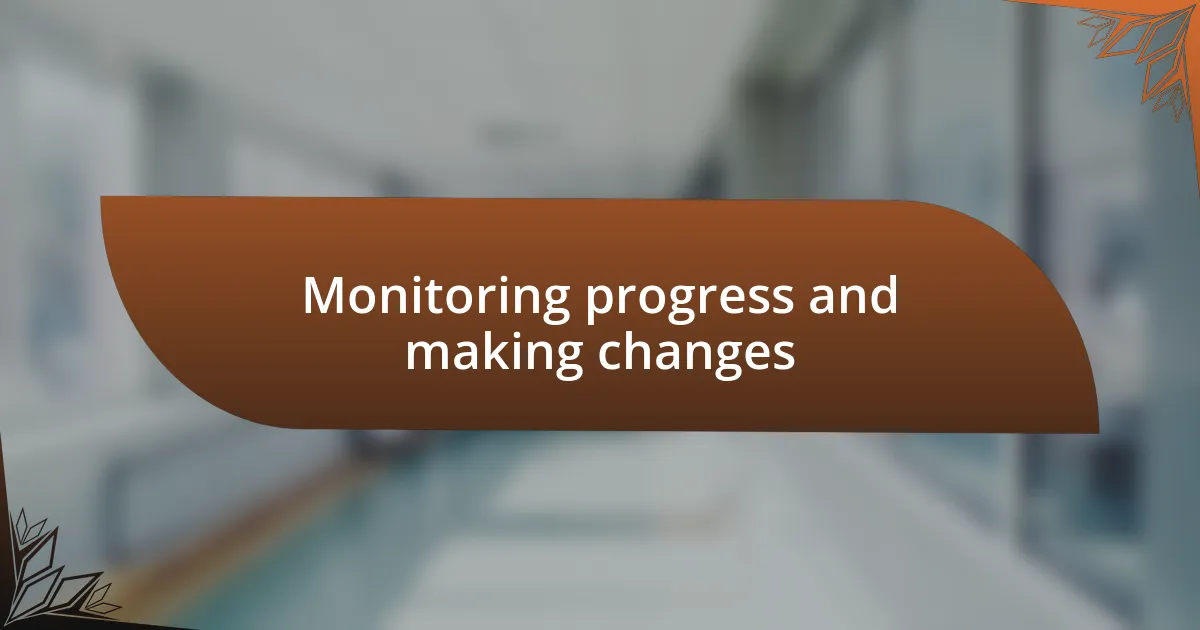
Monitoring progress and making changes
Monitoring my progress became a game-changer in my journey. With each week, I tracked my meals and reflected on how they made me feel, both physically and emotionally. I still recall the moment I noticed my mid-week slump coincided with a heavy pasta night; realizing this allowed me to make informed choices about my meals. Have you ever felt that connection between what you eat and how your body responds?
As I continued to monitor my food intake, I discovered patterns that surprised me. For instance, I observed that I craved sweets more on days when I skipped breakfast. Understanding this correlation guided me to prioritize starting my day with nutritious options. I never thought that a simple morning ritual could significantly influence my cravings throughout the day.
Data not only informed my choices but it also encouraged me to be adaptable. I learned to reassess my progress weekly, adjusting my goals accordingly. When I hit a plateau, rather than feeling defeated, I expanded my food journal to include more details, like portion sizes and feelings during meals. This deeper level of reflection often led to breakthroughs. How often do you examine the ebbs and flows of your eating habits? Trust me, it’s worth the effort.
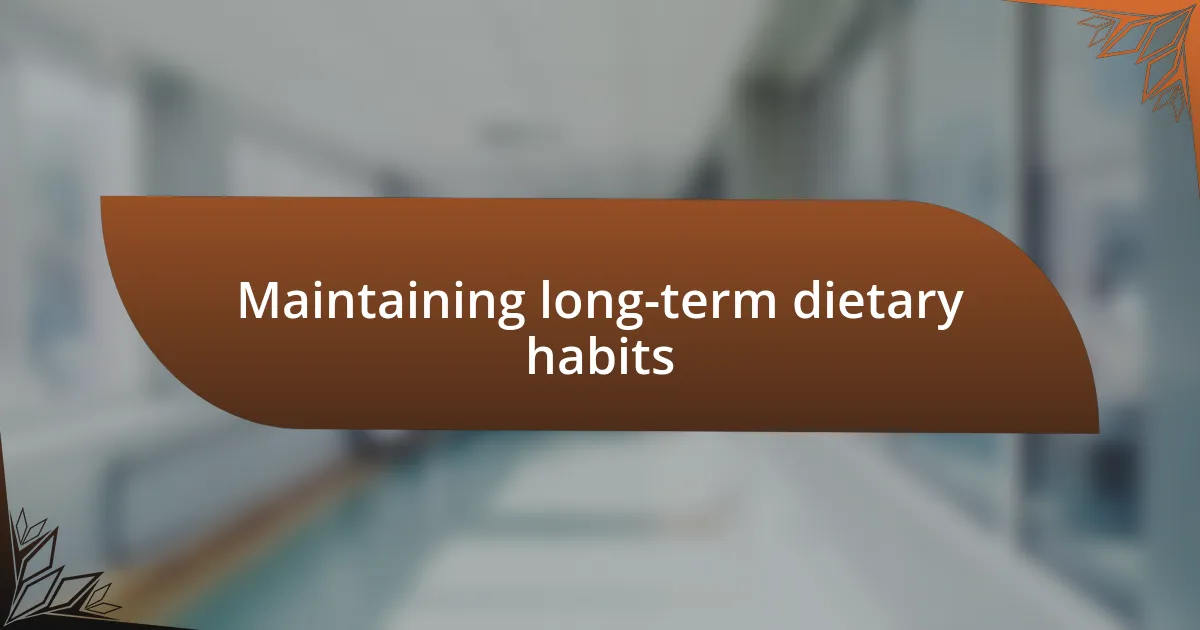
Maintaining long-term dietary habits
Maintaining long-term dietary habits requires a conscious commitment to sustain the changes you’ve made. I remember when I first started, it felt like I was swimming against the current—temptations lurked everywhere. But over time, I discovered that creating a supportive environment made all the difference. Have you considered how your surroundings influence your choices? By stocking my kitchen with healthy snacks and prepping meals in advance, I set myself up for success and felt empowered to stay on track.
One thing that surprised me was how crucial it was to celebrate small victories along the way. I’ll never forget the joy I felt when I resisted a tempting dessert at a friend’s birthday party. Instead of indulging, I savored a piece of fruit I had packed. It wasn’t just about the food; it was a moment of pride that reinforced my commitment to my dietary goals. Recognizing and celebrating these moments not only boosts motivation but fosters a positive mindset toward food.
However, I’ve learned that it’s essential to be kind to myself during tough times. There were weeks when I slipped back into old habits, and instead of beating myself up, I chose to reflect on what led to those choices. Understanding that life can be unpredictable allowed me to practice forgiveness and resilience. Have you ever dismissed a slip as a failure? I’ve found that embracing these moments as part of the journey helps maintain my long-term dedication to healthier eating.




